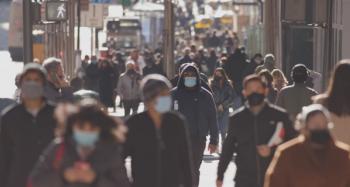
The Pharmacist’s Role Beyond COVID-19
Amid the pandemic, how effectively pharmacists embraced their role as frontline care providers could change the profession forever.
The coronavirus disease 2019 (COVID-19) pandemic has stretched the capacity of the US health care system, increased demand for life-saving medications and exposed disturbing cracks in patient access to care. But the crisis has also shown the nation that health care can and should be a team sport, without professional hierarchies where everyone practices at the top of their education. Over the years, pharmacists have worked hard to establish themselves as core members of a patient’s care team and today, amid the pandemic, how effectively they embrace their role as frontline care providers could change the profession forever.
Answering the Call
The last time the world witnessed a novel viral strain was the H1N1 virus, or “swine flu”, pandemic of 2009. Pharmacists in all 50 states were called upon and granted emergency authorization to administer vaccines. Highly trained pharmacists were empowered to help meet a public health need and demonstrate their ability to serve patients safely and effectively at the point of care. In the years that followed, state legislators took notice and began expanding the pharmacist scope of practice for other public health initiatives. For example, today pharmacists play a critical role in curbing the nation’s opioid epidemic by providing naloxone directly to patients at risk for opioid overdose. History has shown that, when given the opportunity to meet patients where they are in their communities, pharmacists can and do move the needle on patient outcomes. Formalizing emergency authorizations has been one route of ushering in permanent scope of practice changes and COVID-19 is another catalyst with the same potential.
Pharmacists possess deep clinical skills and are highly accessible within the community at thousands of retail locations and across inpatient, outpatient, and emergency treatment settings in hospitals and health systems. This combination puts them in a unique position to help ease the strain on an exhausted health care workforce and overwhelmed delivery system. Moves from pharmacy giants CVS Health and Walgreens to
Measuring Value for Lasting Change
Pharmacists and pharmacy technicians hold the power to help government and health officials address significant public health shortfalls, expand patient access to medications and triage patient care needs in a reliable and scalable way. However, pharmacists and pharmacy technicians must capture and accurately document their impact on patient health outcomes and health care efficiencies in order to drive lasting change and prevent authorizations from sunsetting at the end of the public health emergency.
Proactively documenting clinical and efficiency improvements will require additional efforts on the parts of pharmacists and the use of quality measures that demonstrate the value of their services in a quantifiable way. Fortunately, the American Society of Health-System Pharmacists (ASHP)
Steve Riddle, PharmD, MSIM, FASHP, BCPS, is the director of clinical development for Clinical Surveillance & Compliance at Wolters Kluwer, Health.
Anna Legreid Dopp, PharmD, CPHQ, is the senior director of the Clinical Guidelines and Quality Improvement Center on Medication Safety and Quality at the American Society of Health-System Pharmacists (ASHP).
Newsletter
Pharmacy practice is always changing. Stay ahead of the curve with the Drug Topics newsletter and get the latest drug information, industry trends, and patient care tips.













































































































































